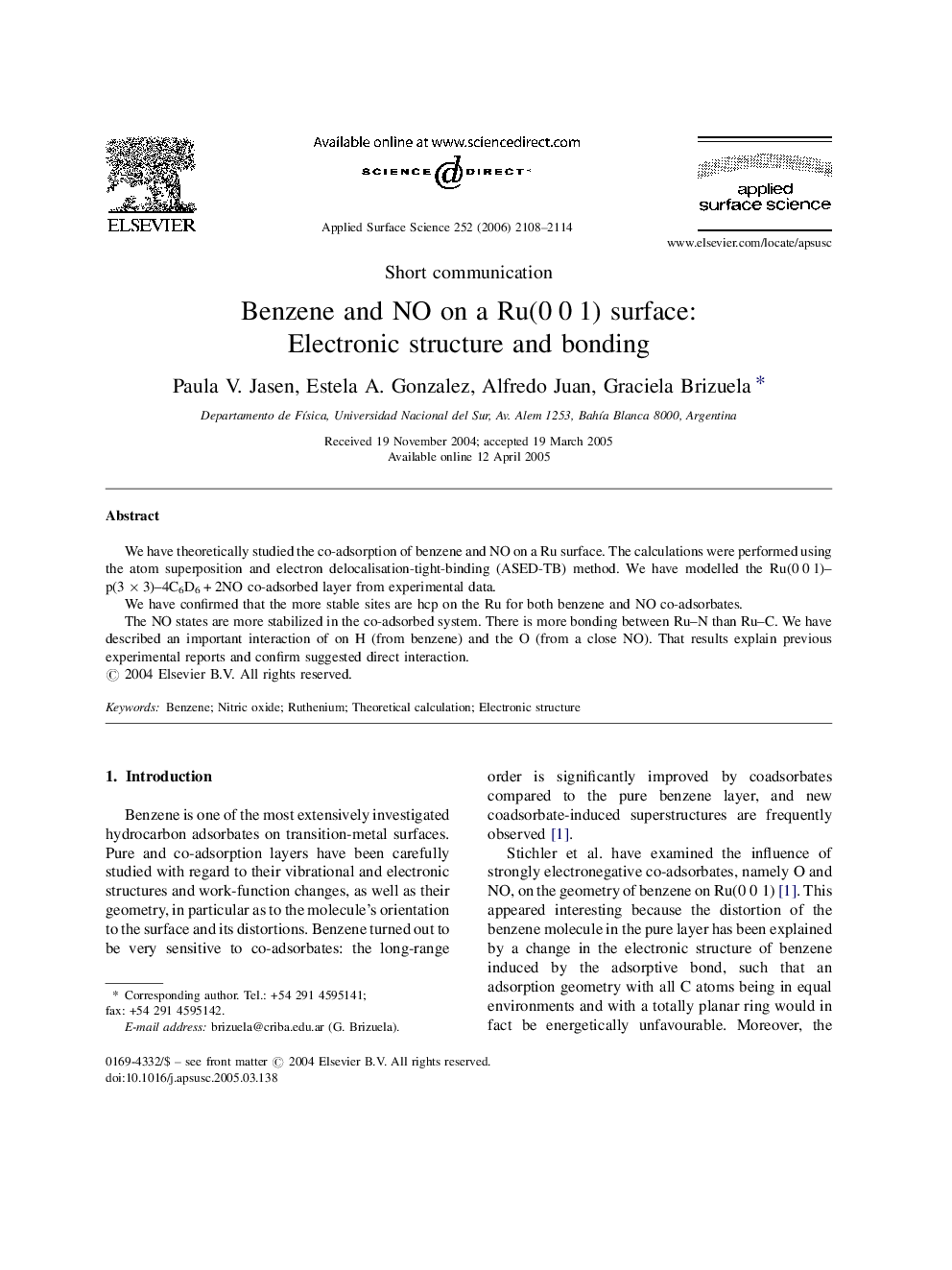| Article ID | Journal | Published Year | Pages | File Type |
|---|---|---|---|---|
| 5367608 | Applied Surface Science | 2006 | 7 Pages |
Abstract
We have theoretically studied the co-adsorption of benzene and NO on a Ru surface. The calculations were performed using the atom superposition and electron delocalisation-tight-binding (ASED-TB) method. We have modelled the Ru(0Â 0Â 1)-p(3Â ÃÂ 3)-4C6D6Â +Â 2NO co-adsorbed layer from experimental data.We have confirmed that the more stable sites are hcp on the Ru for both benzene and NO co-adsorbates.The NO states are more stabilized in the co-adsorbed system. There is more bonding between RuN than RuC. We have described an important interaction of on H (from benzene) and the O (from a close NO). That results explain previous experimental reports and confirm suggested direct interaction.
Related Topics
Physical Sciences and Engineering
Chemistry
Physical and Theoretical Chemistry
Authors
Paula V. Jasen, Estela A. Gonzalez, Alfredo Juan, Graciela Brizuela,
